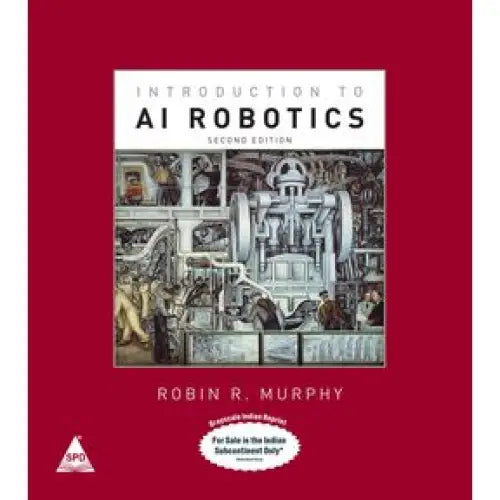BOOKZONE
Introduction to AI Robotics, Second Edition
Author : Robin R. Murphy
Binding:Paperback
Publication Date 2020
Publisher : Shroff Publishers & Distrbutors Pvt. Ltd
SKU:9789368086796
Bulk Discount Get Exta 5% upto 10%
Share

A comprehensive survey of artificial intelligence algorithms and programming organization for robot systems, combining theoretical rigor and practical applications.This textbook provides a comprehensive exploration of Artificial Intelligence (AI) algorithms and programming structures tailored for robot systems. Readers who thoroughly engage with the material will gain the competence to design and critically assess artificially intelligent robots suitable for diverse applications encompassing sensing, acting, planning, and learning. While prior AI knowledge is beneficial, it is not mandatory; the book systematically introduces essential AI concepts from various sub-disciplines, elucidating their contribution to autonomous capabilities. Readers will appreciate the practical applications that bridge theory and real-world robot development.This second edition represents a significant expansion and restructuring of the first, reflecting the substantial advancements in AI over the last fifteen years. An introductory overview establishes a conceptual framework for understanding AI in robotics, contrasting the fundamentally different design philosophies of automation and autonomy. The text subsequently examines the reactive functionalities of sensing and acting in AI robotics. It further introduces the deliberative functions typically associated with intelligence and autonomous initiative. A survey of multi-robot systems is included, alongside a new chapter dedicated to human-robot interaction. Finally, the book provides a "metaview" on designing and evaluating autonomous systems, addressing the ethical considerations inherent in this process. Ashish Kyal practical applications and theoretical knowledge are both given the right importance in this text.New material addresses locomotion, simultaneous localization and mapping (SLAM), human-robot interaction, machine learning techniques applicable to robotics, and ethical implications. Each chapter incorporates exercises to reinforce understanding, and many chapters include case studies demonstrating real-world applications. Endnotes direct the reader to supplementary resources, highlight advanced topics for further exploration, and offer engaging robot trivia. The concepts will also be useful to an experienced trader.


